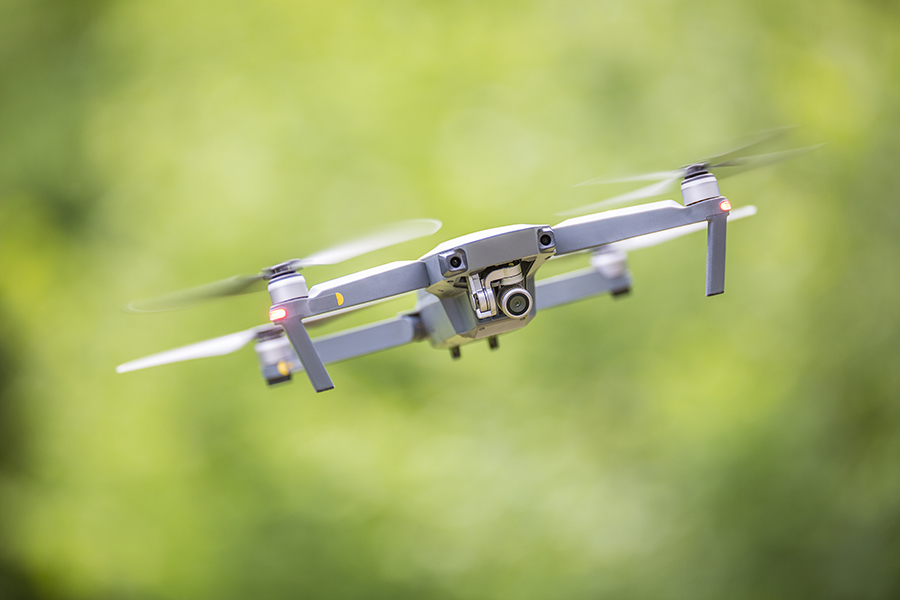Just before 2020 ended, the FAA announced the launching of the final ruling on Remote ID, more formally known as 14 CFR Part 89. We have already written a guide on the basic points of the ruling but there is still more ground to cover. In this article, we will focus on one small but significant topic – FAA-recognized identification areas or FRIAs.
What exactly is a FRIA and how is it relevant to drone pilots? What exemptions can drone pilots enjoy when flying inside a FRIA? How are FRIAs determined and who has the final say on its approval? We’ll try and answer all these questions in this article.
What are FRIAs?
An FAA-recognized identification area (FRIA) is a geographic area where drones are allowed to fly without having to use Remote ID technology. Part 89 cites FRIAs as the third method by which drone pilots can comply with Remote ID requirements.
If you’re flying an old drone that has no Remote ID capabilities and you’re not willing to buy an attachable Remote ID module, then flying in a FRIA is the only way to not get into trouble. The idea is similar to the concept of AMA locations being designated as safe for drone flight without having to request airspace authorization.
How are FRIAs established?
Right now, the FAA has not announced a single FRIA yet. However, they have declared several entities as eligible to request for a FRIA. The list includes FAA-recognized community-based organizations, primary and secondary educational institutions, trade schools, colleges, and universities.
Application
The FAA will begin applications for FRIAs 18 months after the effective date of the Remote ID rule, which should be around September 2022. There is no deadline for applications – the FAA will continue to accept applications at any time after this point.
Applying parties will need to indicate the physical address of the proposed FRIA and the latitude-longitude coordinates of the vertices that define the area’s boundaries. The FAA will assess each application according to its effect on the current airspace capacity with consideration of nearby structures, natural objects, people, or property on the ground.
In the final ruling, the FAA clarifies that they will consider the proximity of other FRIAs when assessing an FRIA application. This is important as the success of Remote ID will rely on most drone pilots actively broadcasting Remote ID signals.
Once an FRIA has been approved, the FAA will give the CBO 10 days to submit amended information or administrative changes. In the case of revision of geographical boundaries, the FAA will evaluate such revisions according to the criteria of a new application.
Renewal
Approved FRIAs will be valid only for a period of 48 months, after which they have to be renewed. CBOs and other institutions will need to fine for a renewal no less than 120 days before the expiration date of an FRIA. The Administrator may deny renewal requests submitted after this deadline.
Termination
The FAA reserves the right to terminate an FRIA should they find that the approved terms pose a risk to aviation safety, national security, homeland security, or public safety. They can also terminate an FRIA if they find that the requesting party submitted false or misleading information during the application. Involved parties may submit a petition to reconsider an FRIA termination no later than 30 calendar days after the termination has been announced.
If an FRIA expires, a CBO can re-apply for the same area but will be treated as a new application. A CBO can also voluntarily ask for the termination of an FRIA, after which it can be re-established if desired.
The terms of the FRIA in the final rule are a massive improvement from the terms in the NPRM. There is no longer a deadline for FRIA applications, and the list of entities who can apply for one has now been expanded to include educational institutions. We imagine flight schools and universities to grab this opportunity alongside the usual hobby flight communities.
Other rules for flying within FRIAs
It hardly needs to be said, but a drone flying in a FRIA must stay within the declared geographical boundaries of the FRIA. The drone pilot or Control Station must also stay within the FRIA confines. Part 89 specifically states that drone flight within a FRIA must always be within the range of visual line of sight. Other than those, all applicable Part 107 or Section 44809 rules still in effect.
Drones with Remote ID technology can still fly within a FRIA. However, it’s worth noting that drones equipped with Remote ID do not have an option to stop the broadcast. This means that the drone will continue to broadcast Remote ID signals even while it is flying inside a FRIA. This should not be a huge issue, but the FAA deems it worth mentioning.
Final thoughts
Even when the Remote ID rules go into full implementation by September 2023, we don’t expect all drone pilots to be flying Remote ID-capable drones. There will probably still be older drones flying around, as will home-built drones that have no Remote ID modules.
The good news is that Part 89 still allows for the flight of drones with no Remote IDs as long as it is done within an FRIA. Although the FAA will not be accepting FRIA applications until September 2022, we expect lots of drone communities and flight schools to be ready to jump on the opportunity. This should at least address the concerns of people who are worried about their drones essentially getting bricked once Remote ID kicks in.



